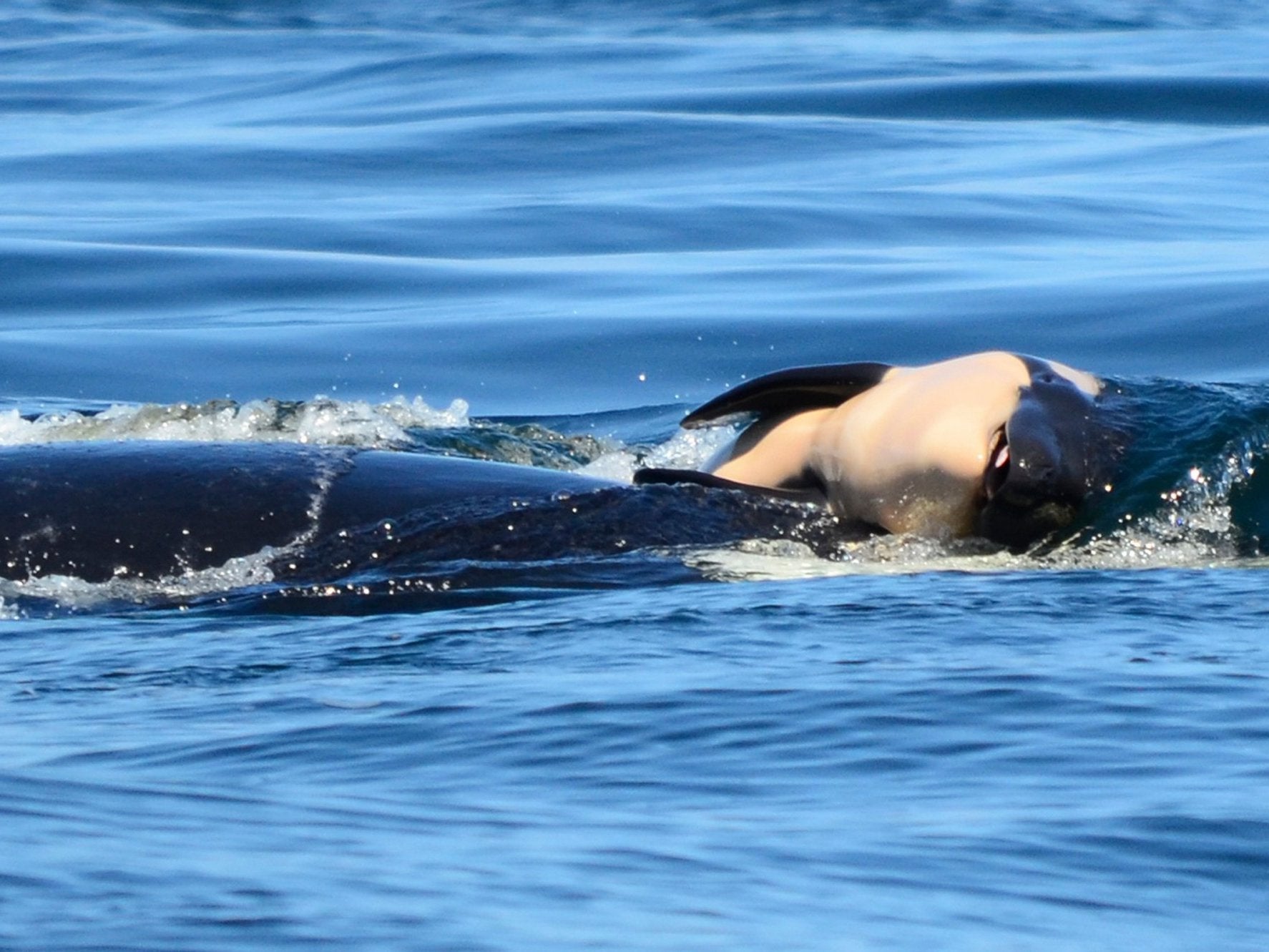‘Mourning’ orca whale seen carrying body of calf 17 days after its death
Orca whales are considered endangered in the US, where their habitats and food supply has been impacted by human development and encroachment

Your support helps us to tell the story
From reproductive rights to climate change to Big Tech, The Independent is on the ground when the story is developing. Whether it's investigating the financials of Elon Musk's pro-Trump PAC or producing our latest documentary, 'The A Word', which shines a light on the American women fighting for reproductive rights, we know how important it is to parse out the facts from the messaging.
At such a critical moment in US history, we need reporters on the ground. Your donation allows us to keep sending journalists to speak to both sides of the story.
The Independent is trusted by Americans across the entire political spectrum. And unlike many other quality news outlets, we choose not to lock Americans out of our reporting and analysis with paywalls. We believe quality journalism should be available to everyone, paid for by those who can afford it.
Your support makes all the difference.An apparently grieving orca whale has been spotted carrying the body of her child 17 days after initially sighted doing so.
While the sight of the mother carrying the tiny whale body around the Pacific Northwest has prompted sympathy and concern in human communities, scientists say they do not plan on taking the carcass away even though they are worried about the mother’s health.
Tahlequah, who scientists refer to as J35, was most recently observed pushing the body of her child Wednesday by Canadian scientists off the coast of the Olympic Peninsula. She was then seen again Thursday with the body. Orca whales are known to carry the bodies of their dead children for up to a week, but researches say the length of this grief is unusual.
"Maybe this is just her own way of just getting past the loss of another baby. She's probably lost two more in the past decade. It's got to be tragic for these animals to lose these babies, and it's happening at a record pace," Ken Balcomb, a senior scientist at the Centre for Whale Research, told the BBC.
The mother’s apparent grief has captured the attention of the world, and helped to illustrate the difficulties facing Tahlequah’s pod, which is considered endangered. In addition to the dead calf, another whale in the pod is considered to be in danger, and scientists are preparing a plan to save her by potentially dropping salmon doused with antibiotics in front of the whale in the hopes that the whale will eat them and get better.
All together, the pod has just 75 whales, and the calf that is being carried around the Pacific Ocean was the first whale born alive into the pod since 2015.
“This is completely unprecedented, and honestly your guess is as good as ours as far as what is going on here,” Deborah Giles, a University of Washington research scientist, told the Huffington Post. “I think it’s really easy to put human emotions on it, but personally I think it’s accurate. I think she is grieving”.
While tragic, the death of the calf and the apparent grief of the mother has triggered sympathy among humans worldwide, raising awareness of the dangers killer whales face.
Officials have already begun efforts to address the issue in the Pacific, and a task force convened by Washington Governor Jay Inslee earlier this year met just this week to discuss possible strategies to help the whale population.
Ms Giles said that the attention on Tahlequah could push Mr Inslee to take action, and exert his influence to help the situation.
“The world is watching, and the world is not going to let the status quo continue,” she said. “That’s what’s different, we have legions of people around the world that are paying attention”.
While orcas are the most widely distributed mammal in the world aside from humans, the animal is on the US endangered species list, which provides them extra protections under the law.
The chief threat to orcas is food supply, and on the West Coast of the US, that threat has developed as a result of the construction of hydroelectric dams that have disrupted salmon populations the whales would otherwise eat. Pollution and human encroachment have also disturbed and threatened their natural habitats.
Join our commenting forum
Join thought-provoking conversations, follow other Independent readers and see their replies
Comments